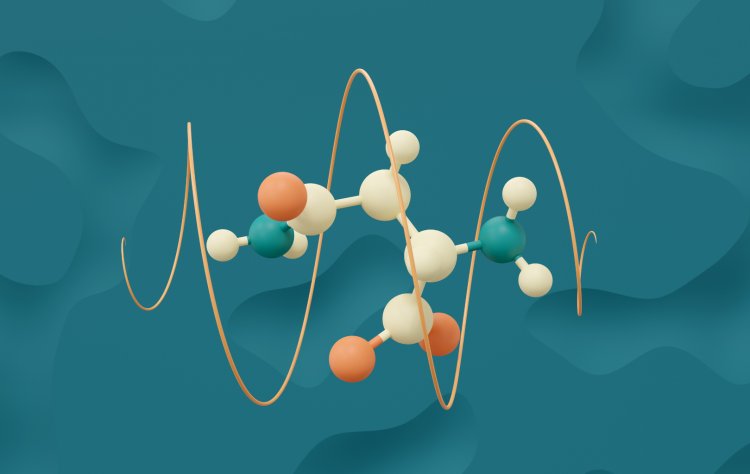Study reveals how odor molecule activates human odorant receptor

California, US: Scientists at UC San Francisco (UCSF) have created the first molecular-level, 3D picture of how an odour molecule activates a human odorant receptor, breaking a long-standing impasse in our understanding of olfaction.
The findings published online in Nature on March 15, 2023, are expected to rekindle interest in the science of smell, with implications for fragrances, food science, and beyond. Odorant receptors, which are proteins that bind odour molecules on the surface of olfactory cells, make up half of our bodies' largest and most diverse family of receptors; a better understanding of them opens the door to new insights into a variety of biological processes.
"This has been a huge goal in the field for some time," said Aashish Manglik, MD, PhD, an associate professor of pharmaceutical chemistry and a senior author of the study. The dream, he said, is to map the interactions of thousands of scent molecules with hundreds of odorant receptors, so that a chemist could design a molecule and predict what it would smell like.
"But we haven't been able to make this map because, without a picture, we don't know how odor molecules react with their corresponding odor receptors," Manglik said.
Smell involves about 400 unique receptors. Each of the hundreds of thousands of scents we can detect is made of a mixture of different odor molecules. Each type of molecule may be detected by an array of receptors, creating a puzzle for the brain to solve each time the nose catches a whiff of something new.
"It's like hitting keys on a piano to produce a chord," said Hiroaki Matsunami, PhD, professor of molecular genetics and microbiology at Duke University and a close collaborator of Manglik. Matsunami's work over the past two decades has focused on decoding the sense of smell. "Seeing how an odorant receptor binds an odorant explains how this works at a fundamental level."
To create that picture, Manglik's lab used a type of imaging called cryo-electron microscopy (cryo-EM), that allows researchers to see atomic structure and study the molecular shapes of proteins. But before Manglik's team could visualize the odorant receptor binding a scent molecule, they first needed to purify a sufficient quantity of the receptor protein.
Odorant receptors are notoriously challenging, some say impossible, to make in the lab for such purposes.
The Manglik and Matsunami teams looked for an odorant receptor that was abundant in both the body and the nose, thinking it might be easier to make artificially, and one that also could detect water-soluble odorants. They settled on a receptor called OR51E2, which is known to respond to propionate -- a molecule that contributes to the pungent smell of Swiss cheese.
But even OR51E2 proved hard to make in the lab. Typical cryo-EM experiments require a milligram of protein to produce atomic-level images, but co-first author Christian Billesboelle, PhD, a senior scientist in the Manglik Lab, developed approaches to use only 1/100th of a milligram of OR51E2, putting the snapshot of receptor and odorant within reach.
"We made this happen by overcoming several technical impasses that have stifled the field for a long time," said Billesboelle. "Doing that allowed us to catch the first glimpse of an odorant connecting with a human odorant receptor at the very moment a scent is detected."
This molecular snapshot showed that propionate sticks tightly to OR51E2 thanks to a very specific fit between odorant and receptor. The finding jibes with one of the duties of the olfactory system as a sentinel for danger.
While propionate contributes to the rich, nutty aroma of Swiss cheese, on its own, its scent is much less appetizing.
"This receptor is laser focused on trying to sense propionate and may have evolved to help detect when food has gone bad," said Manglik. Receptors for pleasing smells like menthol or caraway might instead interact more loosely with odorants, he speculated.
Along with employing a large number of receptors at a time, another interesting quality of the sense of smell is our ability to detect tiny amounts of odors that can come and go. To investigate how propionate activates this receptor, the collaboration enlisted quantitative biologist Nagarajan Vaidehi, PhD, at City of Hope, who used physics-based methods to simulate and make movies of how OR51E2 is turned on by propionate.
"We performed computer simulations to understand how propionate causes a shape change in the receptor at an atomic level," said Vaidehi. "These shape changes play a critical role in how the odorant receptor initiates the cell signaling process leading to our sense of smell."
The team is now developing more efficient techniques to study other odorant-receptor pairs, and to understand the non-olfactory biology associated with the receptors, which have been implicated in prostate cancer and serotonin release in the gut.
Manglik envisions a future where novel smells can be designed based on an understanding of how a chemical's shape leads to a perceptual experience, not unlike how pharmaceutical chemists today design drugs based on the atomic shapes of disease-causing proteins.
"We've dreamed of tackling this problem for years," he said. "We now have our first toehold, the first glimpse of how the molecules of smell bind to our odorant receptors. For us, this is just the beginning."















































